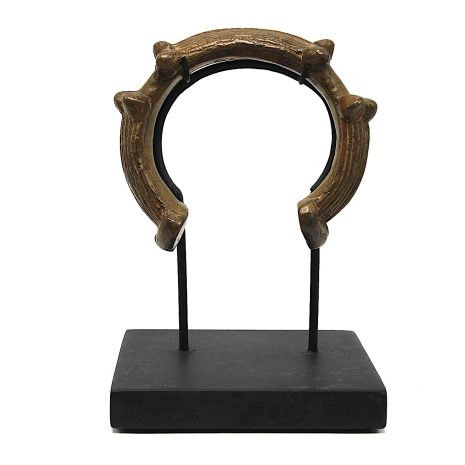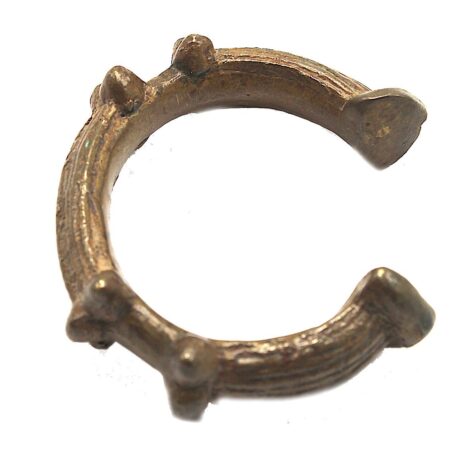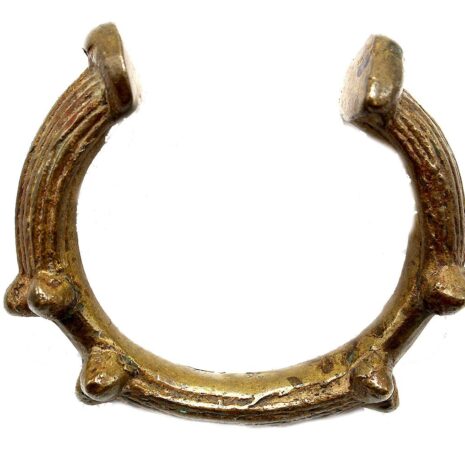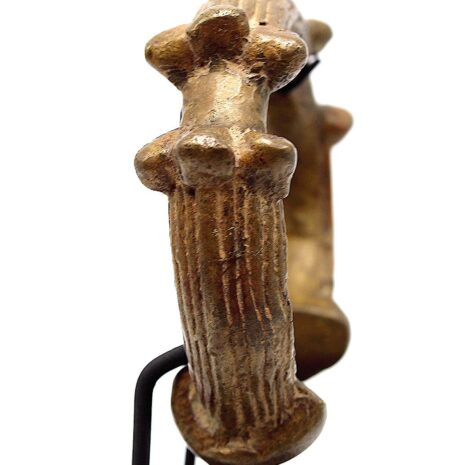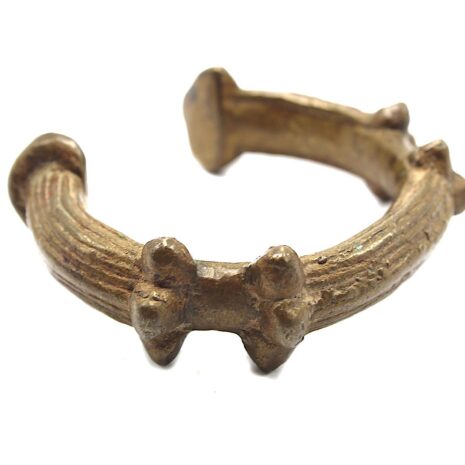Antique Senufo Manilla Currency Bracelet, West Africa (3144)
Original price was: $195.00.$155.00Current price is: $155.00.
H: 2.75” W: 3.625” Thick: 1” Circum. 9.375” | FREE SHIPPING IN CONTINENTAL u.s.
Antique 3-sections Senufo manilla with incising, raised bosses and flattened discs at ends. Very heavy, used to store wealth, trade for purchases, bridal dowries or ceremonies. Fine patina, wood and metal stand.
Description
For centuries West Africa artisans created metal arm and ankle bracelets as wealth and status, jewelry, trade currency and ceremonial use for births, marriages and burials. In the 16th century, British, French and Dutch Africa colonizers appropriated these bracelet forms and designs and manufactured their own versions called manillas. Once a beautiful indigenous artform, they became primarily a European manufactured currency based on African traditions for use in the slave trade referred to as “slave bracelets,” “slave trade money” and “bracelet money” to purchase plantation slaves for the Americas. Usually made of alloys of brass, bronze, or copper, their use as a primary currency declined significantly by the 20th century due to abolition of the slave trade, prohibition for use by foreign traders under the Manilla Currency Ordinance of 1919, and introduction of other currencies such as the British West African currency. In the 1940s and 50’s, manillas were confiscated and melted down for use for other purposes. Manillas are still worn by slave descendants in the Caribbean who consider them significant treasures to pass on to future generations.
The Senufo, numbering between 1.5 and 2.7 million people in West Africa, are known for their fine metalwork and their bracelets are found throughout West Africa. This antique Senufo copper alloy bracelet is decorated with incised parallel ridges covering its 3-sections with sets of raised bosses and flattened discs at each end. In excellent condition with a fine patina and usual signs of age and use, it also has a wood and metal stand.
Click here for Blog Manillas: Former African Trade Currency.
Additional information
| Place of Origin | Africa |
|---|---|
| Period | Antique (1200-1920) |
| Date | 19-20th Century |
| Materials and Technique | Bronze/brass/copper alloy |
| Dimensions (inches) | Ht: 2.75” W: 3.625” Thick: 1” Circum: 9.375” |
| Dimensions (metric) | H: 6.98 W: 9.14 Thick 2.54 Circum: 23.8 |
| Weight | 7.9 oz |
| Item Number | 3144-QAS |
| Condition | Excellent, fine patina demonstrating age and use |
| Shipping Box Size |

